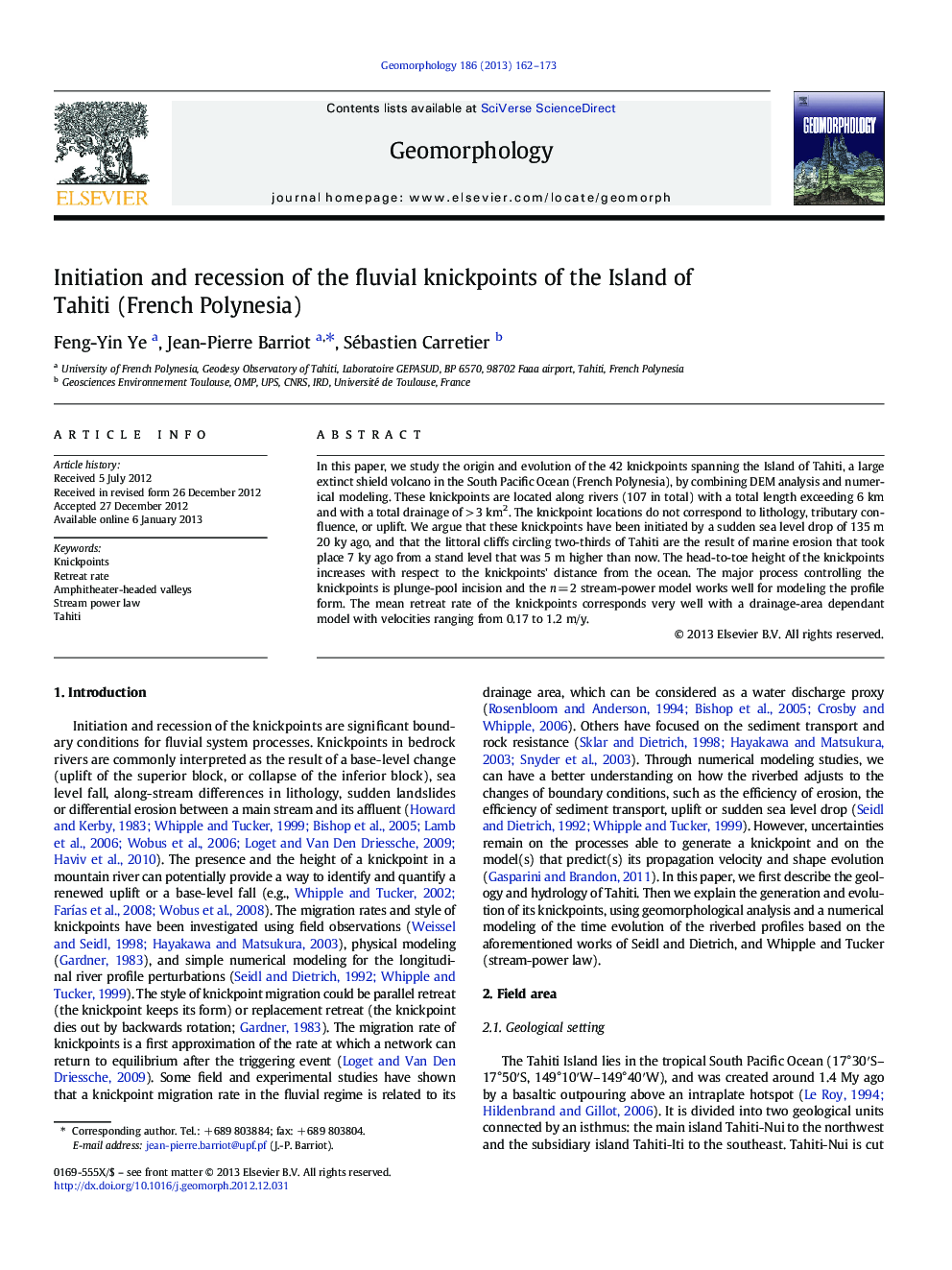| Article ID | Journal | Published Year | Pages | File Type |
|---|---|---|---|---|
| 4684994 | Geomorphology | 2013 | 12 Pages |
In this paper, we study the origin and evolution of the 42 knickpoints spanning the Island of Tahiti, a large extinct shield volcano in the South Pacific Ocean (French Polynesia), by combining DEM analysis and numerical modeling. These knickpoints are located along rivers (107 in total) with a total length exceeding 6 km and with a total drainage of > 3 km2. The knickpoint locations do not correspond to lithology, tributary confluence, or uplift. We argue that these knickpoints have been initiated by a sudden sea level drop of 135 m 20 ky ago, and that the littoral cliffs circling two-thirds of Tahiti are the result of marine erosion that took place 7 ky ago from a stand level that was 5 m higher than now. The head-to-toe height of the knickpoints increases with respect to the knickpoints' distance from the ocean. The major process controlling the knickpoints is plunge-pool incision and the n = 2 stream-power model works well for modeling the profile form. The mean retreat rate of the knickpoints corresponds very well with a drainage-area dependant model with velocities ranging from 0.17 to 1.2 m/y.
